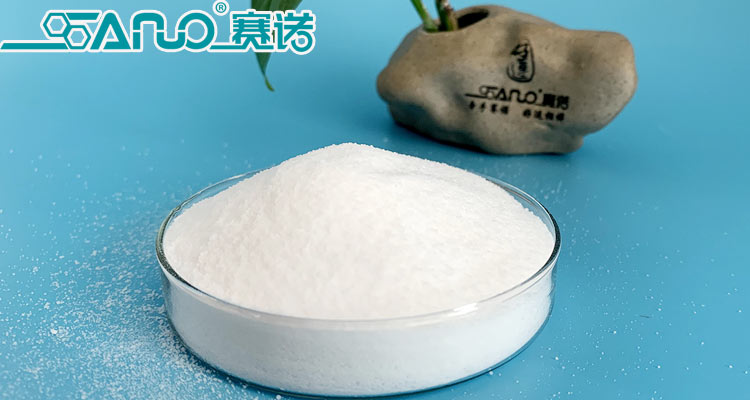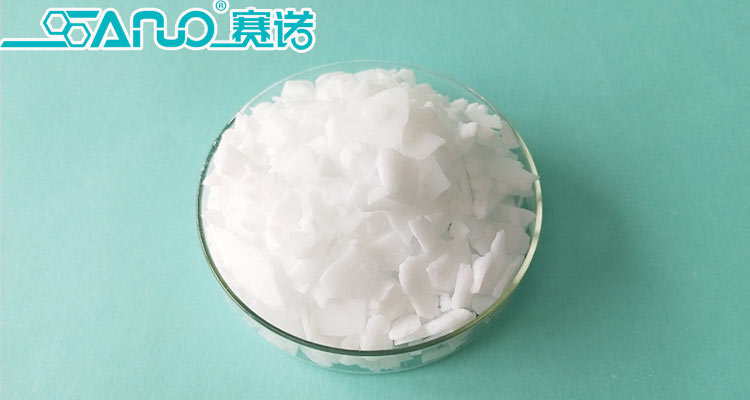With the development of wire and cable industry, polyethylene wax, as the internal and external lubricant of cable material, can not only provide internal and external lubrication, but also improve the surface finish, wear resistance and aging resistance without damaging the impact resistance and toughness of products. In today’s article, Qingdao Sainuo pe wax manufacturer will take you to understand the defects existing in the extrusion of wires and cables.

1. Positive and negative deviation of plastic layer
(1) The phenomenon of positive and negative out of tolerance occurs
The speed of screw and traction is unstable, and the ammeter or voltmeter swings left and right, which affects the outer diameter of cable and produces deviation of plastic layer; Quality problems of semi-finished products, such as loose wrapping of steel belt or plastic belt, uneven convex concave phenomenon, or defects such as wrapping, edge and pit in plastic layer; The temperature control is ultra-high, resulting in the reduction of extrusion, resulting in the sudden thinning of the outer diameter of the cable and the thinning of the plastic layer, forming a negative difference.
(2) Causes of positive and negative out of tolerance
The wire core or cable core is not round, there is snake shape, and the outer diameter changes too much; Quality problems of semi-finished products, such as poor steel belt joint, loose steel belt sleeve, steel belt crimping, loose plastic belt sleeve, too large joint, scattered flowers, etc; During operation, the mold core selection is too large, resulting in glue pouring and plastic layer deviation; When adjusting the mold, the mold adjusting screw is not tightened, resulting in reverse buckle, which makes the plastic layer deviate from the core; The screw or traction speed is unstable, resulting in out of tolerance; The feeding port or filter screen is partially blocked, resulting in the decrease of glue output and negative difference.
(3) Methods of eliminating positive and negative out of tolerance
Frequently measure the outer diameter of the cable and check the thickness of the plastic layer. If the outer diameter changes or the plastic layer is uneven, it shall be adjusted immediately; The selected mold shall be appropriate. After adjusting the mold, tighten the mold adjusting screw and press the gland tightly; Pay attention to the screw and traction ammeter and voltmeter. In case of instability, find an electrician and fitter for maintenance in time; Do not add strips or other sundries into the hopper. If this situation is found, it shall be removed immediately.
2. Scorch
(1) Scorch phenomenon
The temperature is too high, or the temperature control instrument fails, causing the plastic to scorch due to ultra-high temperature; The glue outlet of the machine head has large smoke, strong pungent smell and crackling sound; Granular scorched matter appears on the plastic surface; There are continuous pores at the glue joint.
(2) Causes of scorch
Plastic scorch caused by ultra-high temperature control; The screw is used for a long time without cleaning, and the burnt materials are accumulated and extruded with the plastic; If the heating time is too long, the plastic deposit will be heated for a long time, so that the plastic will be aged, deteriorated and burnt; The parking time is too long and the machine head and screw are not cleaned, resulting in plastic decomposition and scorching; Change the mold or color for many times, resulting in plastic decomposition and scorching; The head gland is not compressed, and the plastic is aged and decomposed inside; The instrument controlling the temperature failed, resulting in scorch after ultra-high temperature.
(3) Method of eliminating scorch
Regularly check whether the heating system is normal; Clean the screw or head regularly and thoroughly; Heat up according to the process requirements. The heating time should not be too long. If there is a problem with the heating system, find relevant personnel to solve it in time; Mold change or color change shall be timely and clean to prevent mottled or scorching; After adjusting the mold, press the mold sleeve gland tightly to prevent glue from entering; In case of burning, clean the head and screw immediately.
3. Poor plasticization
(1)The phenomenon of poor plasticization
There is a toad skin phenomenon on the surface of the plastic layer; The temperature control is low, the temperature reflected by the instrument pointer is low, and the actual measured temperature is also low; The plastic surface is dark, with small cracks or small particles without good plasticization; The plastic glue is not sewn well, there is an obvious trace.
(2) Causes of poor plasticization
Temperature control is too low or inappropriate; There are resin particles that are difficult to plasticize in plastics; Improper operation method, screw and traction speed is too fast, and the plastic has not fully plasticized; During granulation, the plastic is mixed unevenly or the plastic itself has quality problems.
(3) Methods for eliminating poor plasticization
Control the temperature according to the process regulations. If the temperature is low, increase the temperature appropriately; The speed of screw and traction should be properly reduced to increase the time of plastic heating and plasticization, so as to improve the effect of plastic plasticization; Use screw cooling water to strengthen the plasticization and tightness of plastics; When selecting the mold, the mold sleeve should be smaller to strengthen the pressure at the rubber outlet.
4. There are pores, bubbles or air holes
(1) Reasons for this phenomenon
Local control temperature is too high; The plastic is wet or has moisture; The excess gas in the plastic is not discharged after parking; The natural environment is humid, resulting in pores, bubbles or air holes.
(2) Methods to eliminate this phenomenon
The temperature control shall be appropriate. In case of excessive temperature, it shall be adjusted immediately to prevent excessive local temperature; During feeding, the quality of plastics shall be strictly checked, especially in cloudy and rainy seasons. In case of moisture and water, the use shall be stopped immediately, and then the wet materials shall be cleaned; A preheating device is added at the feeding place to drive away the moisture and moisture in the plastic; Take samples frequently to check whether there are pores, air holes and bubbles in the plastic layer.
5. Disconnection or glue breaking
(1) Reasons for this phenomenon
The conductive core has water or oil; The wire core is too heavy to contact with the mold core locally, resulting in temperature reduction, local cooling of the plastic, and disconnection or glue breaking due to plastic stretching; The quality of semi-finished products is poor, such as loose sleeves of steel belt and plastic belt, loose or too large joints.
(2) Method of exclusion
The mold shall be larger, especially the mold with sheath, which shall be enlarged by 6-8mm; Properly reduce the length and thickness of the core nozzle; Reduce the speed of screw and traction; Properly raise the control temperature of the head;

6. Pits and holes
(1) Reasons for this phenomenon
The tightly pressed conductor core is not tightly twisted and has gaps; The wire core has water, oil and dirt; The semi-finished products have defects, such as strand expenditure, falling, crossing and bending, overlap of steel strip and plastic strip, loose sleeve, oversized joint, etc; Low temperature control.
(2) Method of exclusion
The tightening of stranded conductors shall comply with the process regulations; If the semi-finished products do not meet the quality requirements, they shall be processed before production; Remove the dirt and preheat the cable core or wire core.
7. Plastic layer wrapping, edges and corners, ears, wrinkles and concave convex
(1) Reasons for this phenomenon
Quality problems caused by wrapping plastic tape and steel strip; The mold selection is too large, which is caused by vacuum pumping; Plastic glue pouring occurs after the mold core is damaged; The core is too heavy and the plastic layer cannot be cooled well.
(2) Method of exclusion
Check the quality of semi-finished products, and the unqualified products will not be produced; Check the mold before assembly, and handle the problems before use; Mold selection should be appropriate. Properly reduce the traction speed to completely cool the plastic layer.
8. There are traces on the plastic surface
(1) Reasons for this phenomenon
The surface of die sleeve bearing wire diameter is not smooth or notched; If the temperature control is too high, the barium stearate of the plastic itself decomposes and accumulates at the die sleeve mouth, resulting in traces.
2) Method of exclusion
When selecting the mold, check whether the surface of the die sleeve bearing wire diameter is smooth. If there are defects, deal with them; Reduce the temperature of the heating zone of the machine head appropriately, and remove barium stearate immediately after it is produced.
9. Poor glue joint
(1) Bad glue joint
On the outside of the surface of the plastic layer, the plastic is not combined well, with a black mark and cracks in serious cases; The glue joint of the plastic layer is not plasticized well, with pimples and small particles, which can be torn off by hand in serious cases; The control temperature is low, especially the control temperature of the head.
(2) Reasons for poor glue joint
Low control temperature and poor plasticization; The machine head has been used for a long time, resulting in serious wear; The temperature control of the machine head fails, resulting in low temperature and poor plastic lamination.
(3) Methods to eliminate bad glue joint
Appropriately increase the control temperature, especially the control temperature of the machine head; The outside of the machine head is insulated with thermal insulation device; Add two layers of filter screen to increase the pressure and improve the plasticization degree of plastic; Appropriately reduce the speed of screw and traction to prolong the plastic plasticization time and achieve the purpose of plastic joint; Lengthen the wire diameter of the die and increase the extrusion pressure and temperature.
Qingdao Sainuo Chemical Co.,Ltd. We are manufacturer for PE wax, PP wax, OPE wax, EVA wax, PEMA, EBS,Zinc/Calcium Stearate…. Our products have passed the REACH, ROHS, PAHS, FDA testing. Sainuo rest assured wax, welcome your inquiry! Website:https://www.sanowax.com
E-mail:sales@qdsainuo.com
sales1@qdsainuo.com
Adress:Room 2702,Block B, Suning Building, Jingkou Road, Licang District, Qingdao, China
Post time: Oct-27-2021
